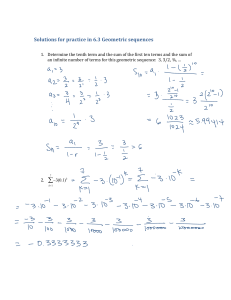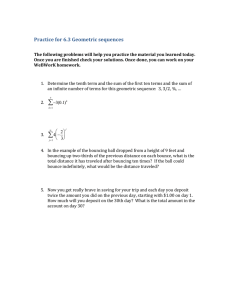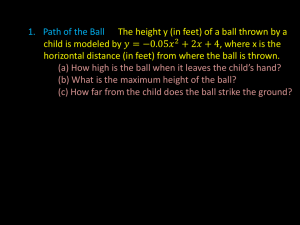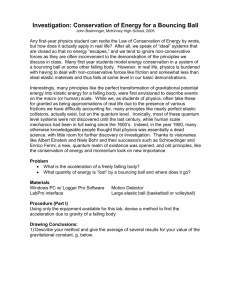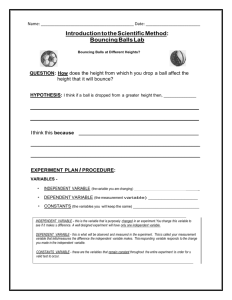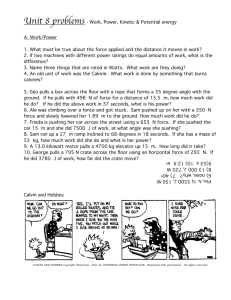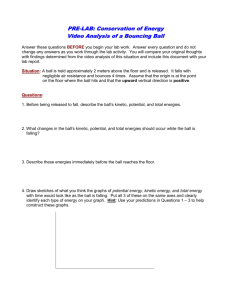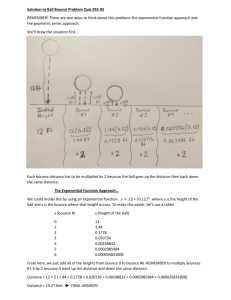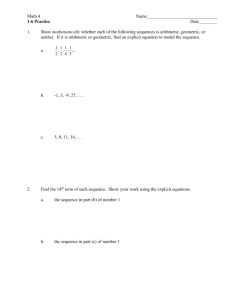Lab: Energy of a Bouncing Ball 2013
advertisement
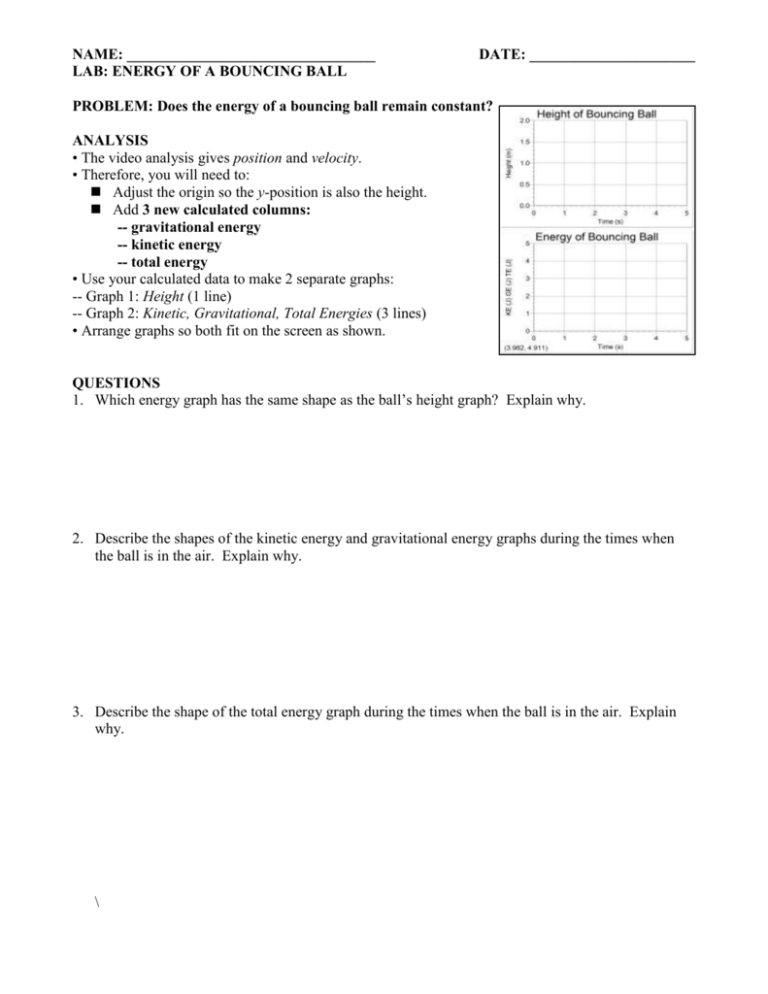
NAME: _________________________________ LAB: ENERGY OF A BOUNCING BALL DATE: ______________________ PROBLEM: Does the energy of a bouncing ball remain constant? ANALYSIS • The video analysis gives position and velocity. • Therefore, you will need to: Adjust the origin so the y-position is also the height. Add 3 new calculated columns: -- gravitational energy -- kinetic energy -- total energy • Use your calculated data to make 2 separate graphs: -- Graph 1: Height (1 line) -- Graph 2: Kinetic, Gravitational, Total Energies (3 lines) • Arrange graphs so both fit on the screen as shown. QUESTIONS 1. Which energy graph has the same shape as the ball’s height graph? Explain why. 2. Describe the shapes of the kinetic energy and gravitational energy graphs during the times when the ball is in the air. Explain why. 3. Describe the shape of the total energy graph during the times when the ball is in the air. Explain why. \ 4. Notice that at certain times, all 3 of the energy graphs suddenly drop to zero simultaneously. What was the ball doing at these times? Where is most of this “missing” energy stored? 5. Notice that between bounces, the plateaus of the total energy graph are not same. Where is this “missing” energy stored? 6. Fill in the table below with the values from the plateaus of the total energy graph. Find a pattern between the before bounce and after bounce energies. Fill in the last column of this table to illustrate this pattern. Bounce # Total energy BEFORE bounce Total energy AFTER bounce 1 2 3 4 7. Suppose we repeated the experiment using a ball has a little less air and therefore is less bouncy. (a) What would be the same about each of the energy graphs compared to the bouncier ball? (b) What would be different? 8. Does the energy of a bouncing ball remain constant?--Yes AND No! Explain.
